Kiya Babzani: Where the Past Will Take US
Having had a seminal influence in the growth and development of Japanese denim in North America, Kiya Babzani has seen his passion turn into his livelihood. This particular interview is far from a quick read, so shut down your MSN and close your email.
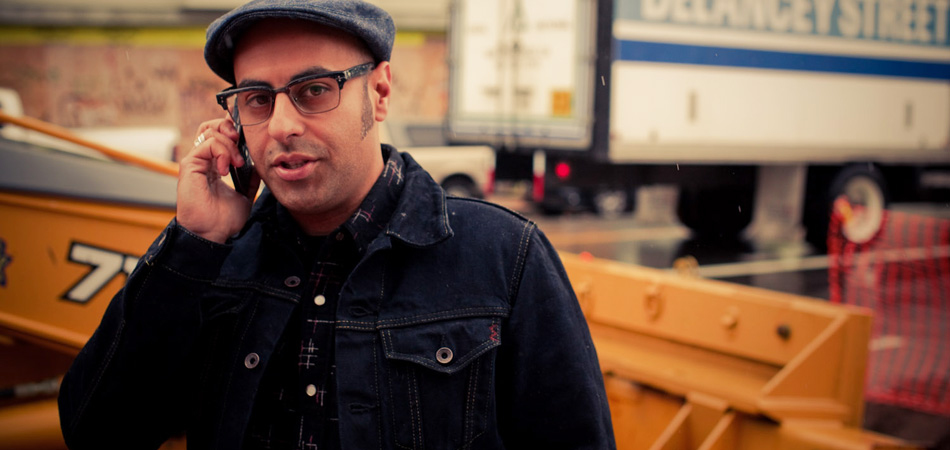
Having had a seminal influence in the growth and development of Japanese denim in North America, Kiya Babzani has seen his passion and hobbies turn into his livelihood on more than one occasion. From yo-yo’s to denim, the San Francisco-based Babzani has been a popular contributor through a handful of popular fashion forums, single handily bringing a new sense of education and creating an increasingly large fan base of not only high-quality denim, but top-notch vintage reproduction garments in general. We made the most of this recent opportunity to interview Kiya as we touched on an extensive number of topics, ranging from the changing Japanese/American dynamic and where the future holds for heritage-based fashion. This particular interview is far from a quick read, so shut down your MSN and close your email.
Interview: Eugene Kan
Photography: Brad Brok
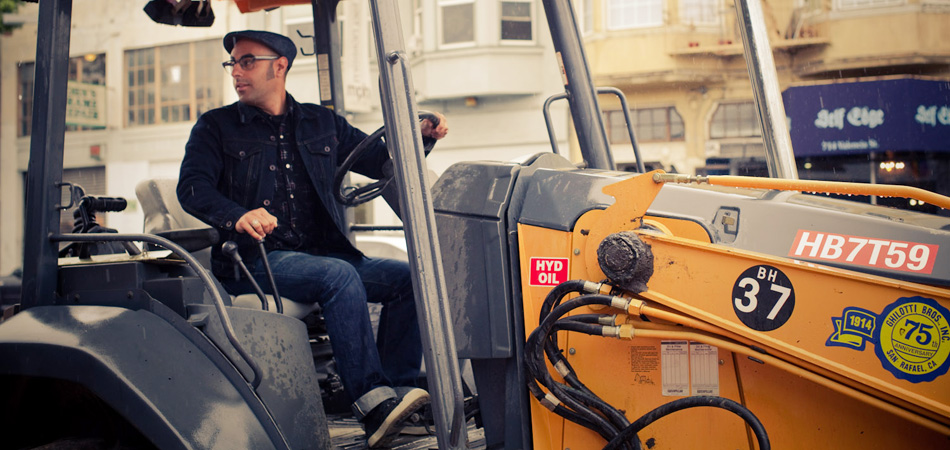
So for most people that stumble upon HYPEBEAST, you’re perhaps best known for your love and knowledge of denim as well as one of the best points of retail for jeans outside of Japan, with Self Edge. But beyond that, what other facets are you involved in? As I understand, you’re deep into yo-yos as well as having another retail spot?
That’s a hard one, why you gotta drop something so heavy as the first one… Yes, I have another retail store which we started six years ago called Turf, which is more of a footwear and casual wear store carrying basics like Levi’s, Vans Vault and Stussy. And before that I started a yo-yo manufacturing company called Anti-Yo which was a bit of an experiment, to see if it’s possible to successfully exist in a market which nobody at the time was doing anything inventive in terms of marketing or image.
To be honest, when I first heard about the yo-yo gig, I was pretty intrigued. Was your interest in yo-yos a by-product of your youth or something that went along with the themes of some of the subcultures you enjoy like vintage-themed clothing?
Neither actually, I got into yo-yos when I was about 21 or so, which is a very odd age to get into something like that. It had nothing to do with the vintage factor, I picked it up and couldn’t put them down. That took over my life for a while. For at least five or six years, I was traveling around the world going to contests, setting up contests, etc.
So do the various aforementioned business gigs you have represent different interests and times in your life? Did yo-yos progress to Turf which led to Self Edge?
Yes, exactly. You don’t plan on these things in life. I always say that people in retail never thought they’d be doing it years ago, nobody goes to college with the intention of opening a retail store, not that I went to college. But it’s something that you “end up” doing.
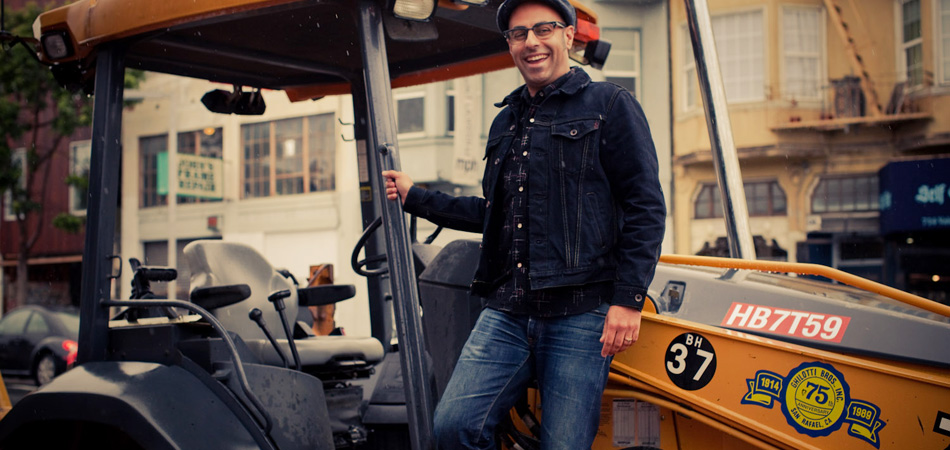
It seems as though you’ve really been able to turn a strong love and passion into something you could make a living off of. Are you by nature somebody that finds something you really appreciate and look to learn all aspects of it? What could be the next thing after denim and repro-wear?
I’m very grateful that what I love doing has turned into a living for me, but I’m not sure what I would have done had none of the businesses worked out. It was almost out of necessity that they HAD to work. When I discover a new genre or hobby I immerse myself into it, but thankfully it’s not often I find new things. Its good to limit yourself so you’re not jumping on trends. Yo-yos I’ve been into for 11 years, denim and vintage I’ve been into for 13 years, anything 40’s and 50’s I’ve been into for 15 years. My only recent interest is motorcycles, which has only been a few years, and the only reason I don’t own ten bikes is the fear of being torn into three pieces on a highway. So instead I just joy-ride for now, not that you won’t get torn into three pieces on a joy-ride, you’re just riding less and not commuting daily.
In terms of denim and becoming educated on the subject matter, would you say without the frequent trips to Japan, none of this would have been possible on the basis of Japanese culture and business? It seems that this is a big barrier to enter and there’s a reason there’s only a handful of Japanese denim specialty stores outside of Japan for this very reason.
For the first couple of years this was definitely true, going to Japan back and forth was essential. After Self Edge became recognized as it is now, the need to go to Japan became less frequent because denim companies in Japan were emailing us to sell their product. At first it was all about “come to Japan, come to our office, let’s meet and talk first”. Now it’s about “please sell our jeans to Americans”. It’s funny… I’m still back and forth to Japan every few months though, and not just to buy for Self Edge, the entire Japanese connection has become deeper than just doing buying for the store.
What aspect of this relationship change where brands are hitting you up first is due to Self Edge becoming popular versus a diminishing domestic market in Japan? Typically in the past, Japanese brands were content with domestic sales, are Japanese brands warming up quickly to being sold over a larger audience?
It’s a combination of us becoming THE store in America that sells only Japanese vintage style brands and nothing else, and becoming known for that IN Japan. Partially that has to do with our presence there. When we go there we have a section of a booth at the Inazuma festival for instance and we’re the only American company there. Also, doing the collaborations with the brands in Japan helps us greatly in terms of branding ourselves in Japan, people there want the products and actually have to order them from our site for once and have it returned back to Japan. This is always interesting for us because the tables have turned, so instead of Americans ordering it from Japanese sites we have the Japanese ordering Japanese product from an American retailer.
The second part of this is also the diminishing market for these brands in Japan. There are more now than there ever were doing this type of fashion in Japan and the market there has shrunk a bit. So the brands are looking to the west for customers for the first time.
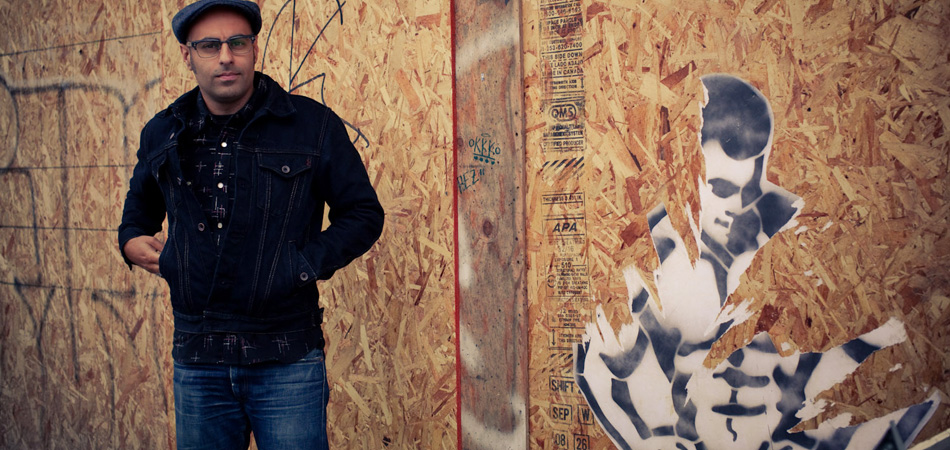
Touching on Self Edge collaborations that make their way back into Japan from the US, do you think that just as much as Japan has become well-known for its appropriation of American culture, there now exists (thanks to Self Edge) a new convoluted sense of culture and design from an American standpoint. Meaning in the future, can we expect a new aesthetic to arise from American involvement in design with these Japanese heritage brands?
Of course! You’ve already seen that happening with brands from the US taking the Japanese repro styes and re-doing them. The thing is that with all these “heritage” American brands that have popped up over the past year or two, the ones that were NOT actual brands 80 years ago, most of their designs are influenced by the Japanese appropriation of vintage Americana whether they admit it or not. Because at the end of the day the American brands are not really doing all styles of vintage, they’re only doing the ones that were made popular by Japanese companies in the 90’s.
With an East Coast Self Edge now complimenting the original West Coast location, do you see any differences in buying patterns between either coasts?
The buying patterns and markets, for one thing in NY they have seasons, something we don’t really have in SF. So in the Winter it’s all warm gear and in the Summer it’s all Summer clothes. In SF, people are buying short-sleeve shirts and jackets year round. Also the customer is a bit different in NY, less concerned with the brand and they want something that’s more dressy looking and less vintage. But that’s expected, the vintage and 50’s scene in NY is near non-existent compared to how large the culture is in California.
In general, would Japan’s consumer patterns be more in line with New York due to the seasons?
Definitely not, besides the seasons, Japan’s buying is far closer to what SF is like. They are very much concerned with the details and the vintage items as opposed to a certain look which the consumer is going for and it doesn’t really matter which brands or styles they buy just as long as that look is there.
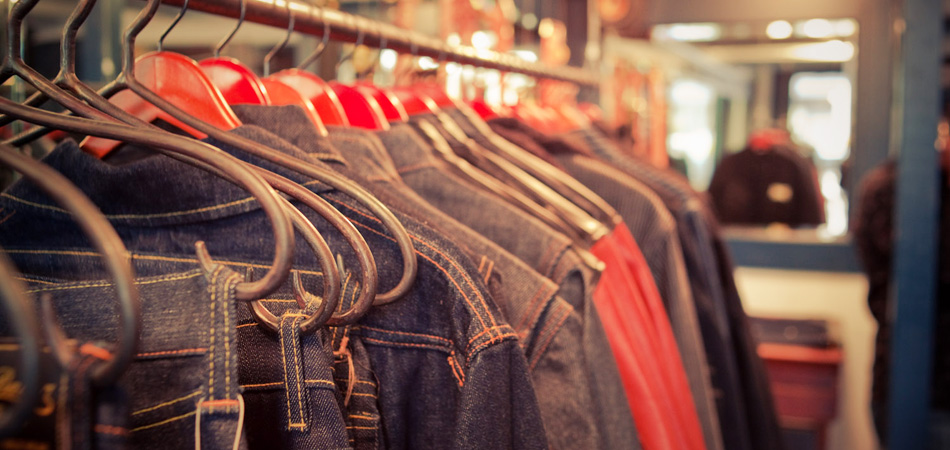
For some of the apparel brands that you deal with, since much of the design is rooted in the past, how important does story-telling become? Or do consumers find that the background behind a brand is often trumped by quality and the overall look of the product?
It really depends from brand to brand, certain labels build a LOT on story like Mister Freedom or Flat Head; Some build heavily on image and utility like Iron Heart; And some build heavy on their inspirations like Dry Bones.
We like to think that everything we carry is really up there in terms of quality and construction and how it ages, so the addition of a story or background is interesting to those customers that really get into what they buy or wear. The ones that really pay attention to every detail of their own life, those are the ones that really get into the branding and back-story of the sub-lines of the brands.
As a retailer, how does one approach the notion of selling something (and sustaining a business) that is often designed to last and not meant to be replaced for quite some time?
In terms of design, this is vintage style done true. The tweaks are many times in fit, which is not always a great thing when they’re being designed for the Japanese body due to discrepancies between Western and Asian body types. It’s a classic style that’s been around for ages and these companies are coming along and producing the items exactly as they were done a hundred years ago. There isn’t much that they’re trying innovate, I’d say more they’re digging deeper back into the lost arts of garment production from the turn of the century. Companies like Flat Head spend years looking for ONE machine which does only one stitch which they feel is superior to the current way to stitch a thermal shirt body for instance, is this crazy?
It seems as though for a lot of these brands, it’s just as much a hobby as it is a business. But on the topic of garment production, is there still hope for the US to re-emerge as a place of denim production that can rival its Japanese counterparts? Or are there simply too many barriers in place for America to re-emerge and return to its former glory?
I’m going to get some flack over this, but the production of garments in America has skyrocketed over the past two or three years but nobody is really seeing anything that matches up to what Japan is doing in terms of the types of fabrics, the stitching, durability, or details.
Is it something that takes far too much investment to see a worthwhile return?
Well, American factories can start by acquiring some machines which are able to do what the Japanese factories can. You don’t know how many times I’ve asked a production house “can you do this?” showing them something from Japan or a vintage garment and them saying “we don’t have the machine”.
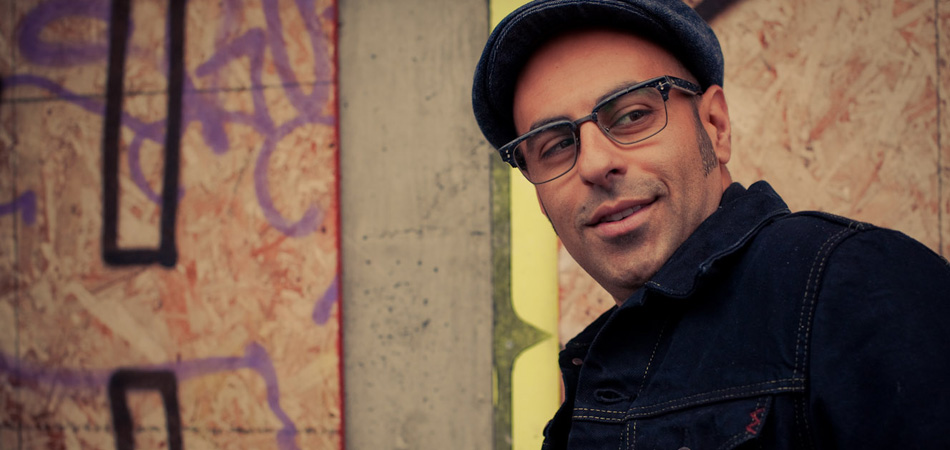
When it comes to footwear, what styles and brands interest you both personally and for the store? I’m sure somewhere in there visvim ranks highly.
VISVIM 4 LIFE… personally I’ve been wearing only visvim footwear for four or five years now with the exception of a few Flat Head leather shoes and some Real Japan Blues shoes. With the brands we work with from Japan, I love what they do in terms of footwear but the huge difficulty lies in the pricing. Boots from Flat Head cost $1000 USD in Japan, dress shoes from Flat Head and Real Japan Blues cost between $550 USD and $700 USD and sneakers are $300 USD or so. The pricing makes them near impossible to sell.
There is another issue, the styles which WOULD sell from all these companies are also available from American companies for less. And let’s just say that while the Japanese ones are of a higher quality, they’re still $1000 boots! The ones which are not available from any other source just would be hard to move purely due to their style. I have some shoes from Flat Head which I love, they retail for $700 USD in Japan but they wouldn’t sell for $250 USD in America purely because of what they look like (a very 50’s rockabilly aesthetic). That’s also the issue I have with workboots in that they’re… workboots. How they ever turned into a fashion item I have no idea, personally I just can’t get into the look.
So where does the future lie for reproduction-based brands? Does its evolution lie in finding and exploring another subculture of the past? Or is the current place it occupies something that is sustainable. I think based on the timing and economic climate, there may very well be a lasting effect. Rocky economic times seemed to help reinforce the fact that quality garments are worth spending money on versus fast and disposable fashion.
I think there’s so much focus right now on a particular look that once that’s over hopefully people will start to explore the other vintage styles which were around before the 60’s. The brands themselves produce so many different styles of vintage reproductions that only a small section of it makes it to the US or to the blogs and message boards. When’s the last time you saw a blog post about a rayon johnny collar shirt?
… I am just drafting one up as we speak haha.
Yet that’s a huge part of many of these companies’ lines, and I buy a lot of it, but nobody else will. Same goes for those shoes I was talking about earlier. America and Europe have taken a small bit of vintage and accepted it into everyday wear, but the parts they’ve picked up have mostly been workwear, and navy and military inspirations. I want to see people get into the actual things people wore in the 30’s, 40’s, and 50’s when they WEREN’T working.
What can you expect somebody to wear in those circumstances?
Collared shirts which aren’t tucked in, worn over t-shirts, with a short body; Short sleeve collared shirts; Plain t-shirts with a tight collar ribbing that are triple stitched; Plain vintage style sneakers; Short Harrington style jackets; Cable-knit shirts. The thing is that all these things are available in really good vintage stores but none of it is affordable. Try and find a good cable-knit shirt for less than $400, it’s near impossible; Or finding a good rayon short-sleeve button down in new condition with a good pattern for less than $450.
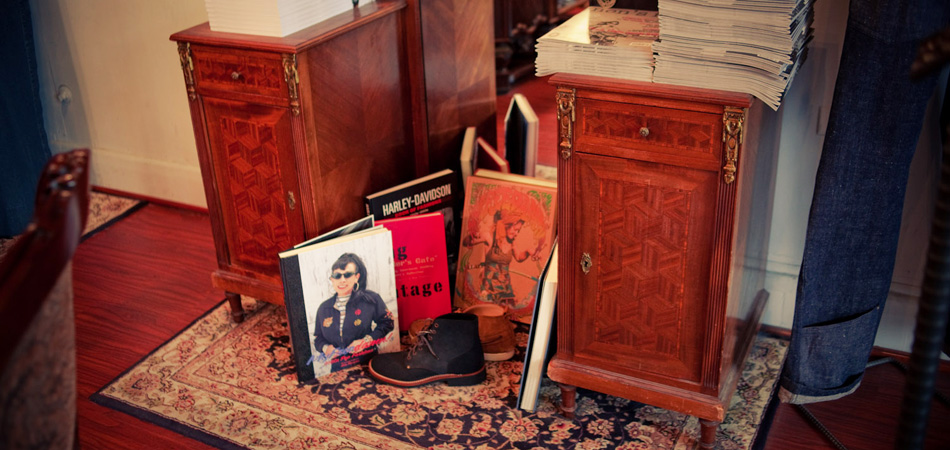
While the workwear/outdoor renaissance could be carried on the backs of Red Wings, Pendleton and L.L. Bean, what options are out there for brands representing non-workwear from the 30’s-50’s? Doesn’t seem like there’s anybody who can carry this torch and promote this aspect of fashion. For example non-workwear brands in America from the 40’s or so.
There are none which are making anything like what they were making 75 years ago. I take it back, Levi’s. That’s it. Then again brands like Red Wing and L.L. Bean have also shifted to produce more vintages styles due to the demand, so if the demand is there you may one day see American brands from eighty years ago pop up again and create lines as if they’re reproducing what they made years ago.
Through a partnership with 3sixteen, we’ve seen you expand into New York. What is it about the brand that left you confident that you two would make a good fit to help develop each other’s business?
The people behind the brand are awesome, hard working, fun, and true to themselves. I’ve never seen a couple of guys have so much fun having their own clothing line. Early on it became apparent to me that our relationship was going to go beyond 3sixteen quickly. I think they’re doing great things and will be doing greater things in the future, I’m personally deeply involved with their denim line and give input from time to time on other things but mostly stick to helping out with the denim collection. We’re doing a new collection called 3sixteen+ which I’m playing a larger role in regards to the design, fabric, and entire process which will debut this spring. Really though, Johan and Andrew are rare in this industry for me.
As you become more heavily involved on the design side of things, do you find yourself exploring something that’s a little more rewarding than retail? Or do they each have their own different merits?
Each definitely has its perks and rewards, my passion is a combination of both retail and design. I love human interaction so when you just design or only manufacture you never actually interact with your customers, you’re more like an artist that puts out music that never tours, you never see the customer face to face. It’s important to know the customer and to become an extension of the brands you carry in your shop, without that you’re just another retail store with no face.
On the topic of interactions, I know you’re extremely active on various forums. To what extent has forums and that direct accessibility between you and consumers enabled you to really educate and promote the world of denim? Many years ago it probably would have been impossible to develop any sort of (relatively) niche community like there exists now.
It definitely would have been possible but it would have moved along far slower and ended up more interesting even because the information wasn’t all there for somebody just starting out. Now people get into it, spend 2 weeks straight on a few message boards reading and all of the sudden they’re giving others advice on it all. Message boards are a complicated thing, it’s unlike anything else on the Internet because it’s such a multi-dimensional interaction with so many different people that moves in real time, 24 hours a day. Nothing else is like that, so without understanding how it works, it’s difficult to harness the power of it.
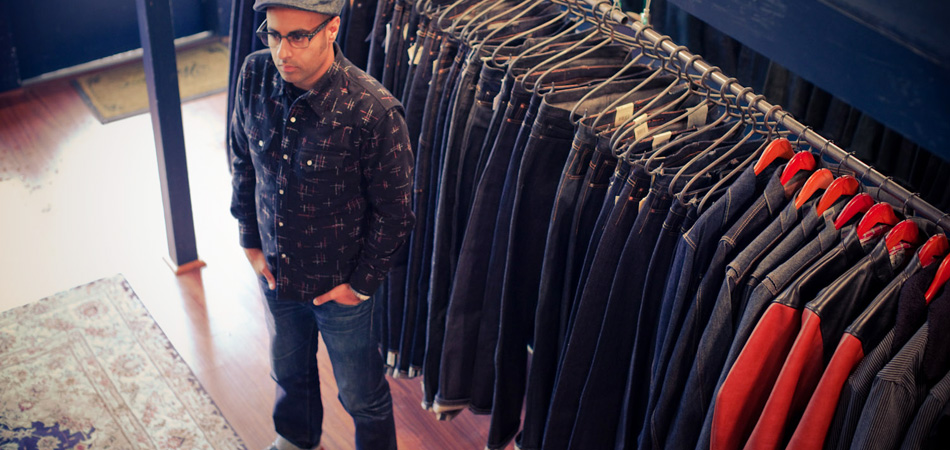
So a double-edged sword if you will… what about some of the different levels of interactivity that have spawned from forums such as denim tours and denim contests? Do these serve any meaningful purpose?
Yeah sure, they’re fun and it adds to the dynamic of the scene and gives people a bit of their own thing to write about. It’s not unlike having a blog except this way you’re getting a far larger base of people to read it right off the bat. If you started your own blog about your jeans you’re wearing or about a pair of boots you resoled yourself and you want to talk about the process, how hard would it be to get people to read it from the beginning? With a message board you have a huge audience that randomly clicks all through sub-forums looking for things to read or look at and you’ll have people commenting on your project or denim tour or whatever and it continues. The more popular your project becomes, the more people who will look at it.
Where can or where should the world of denim go. Or can it simply stay on its present course? The one thing that interests me is how something like denim which is rooted in more simple and archaic ways hasn’t really evolved too much on a technical properties level. You never really have a goal of making denim more breathable or water repellent but this theme has already become a popular direction in apparel by infusing technical properties on iconic pieces of apparel.
Denim hasn’t really changed much since the 80’s, all we have now is a resurgence of interest in the type of denim that was popular in the 40’s to early 60’s. I think the course will remain the same as more people discover denim as a whole, as the years go on. The market is expanding in every direction yearly, whether that be fashion, mass produced, or raw artisan Japanese stuff, it’s going in all directions and will continue to grow.
I don’t think there’s going to be some huge advancement in the denim world if that’s what you’re wondering. We’re dealing with a textile that’s been around for a long while and what’s happening now is more people are wanting it the way it was when it first came around during the turn of the century as opposed to how it mainly was found for a twenty year period starting the early 80’s.
Thanks a lot for the opportunity Kiya, I look forward to more from you and your various projects down the line, especially the 3sixteen+ collection. You have any last words?
Didn’t I say enough? I like the fact that more people are exploring vintage and the styles which were around years ago but I just wish people would explore outside of the small group of items which are popular right now in America.
